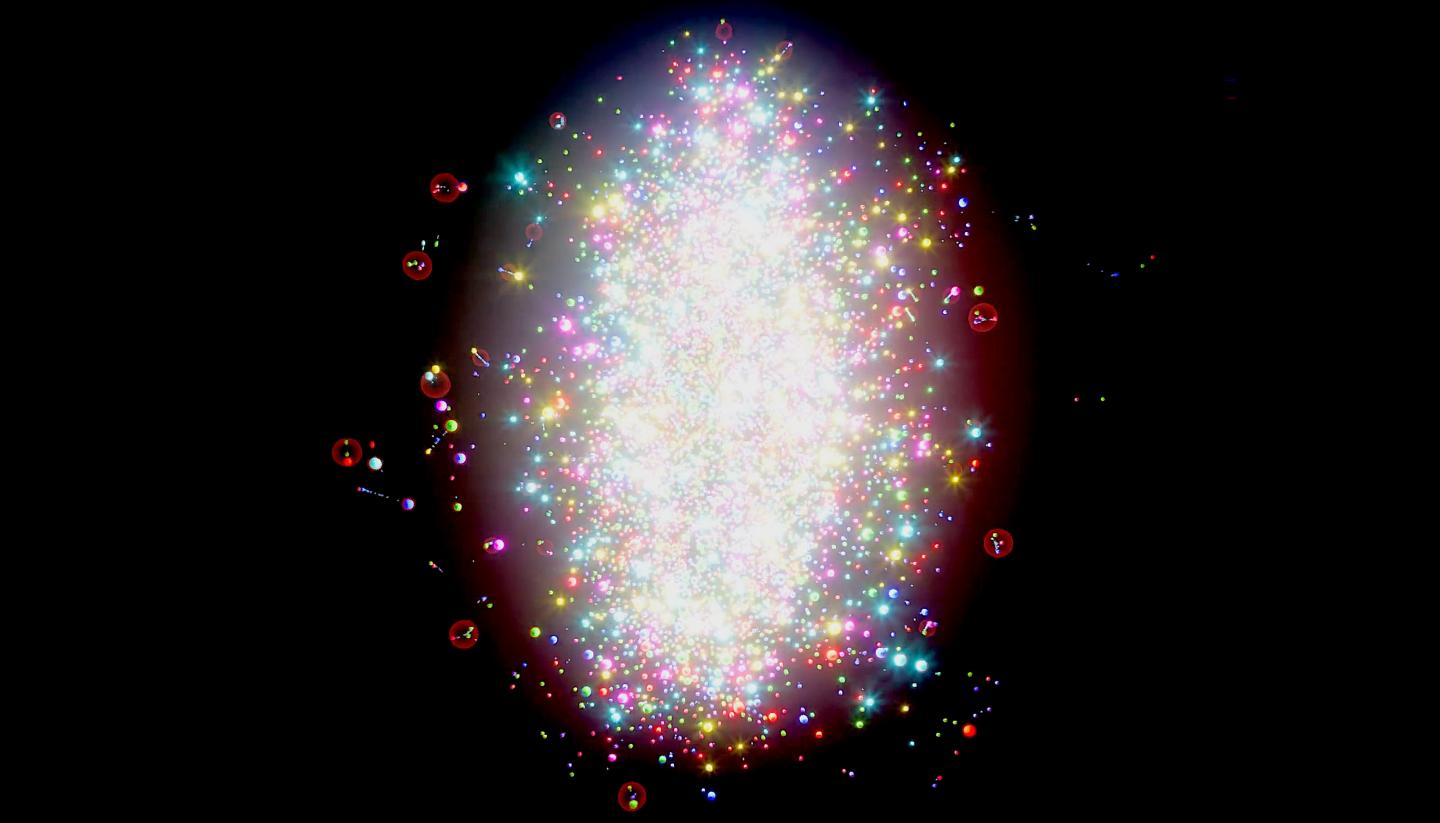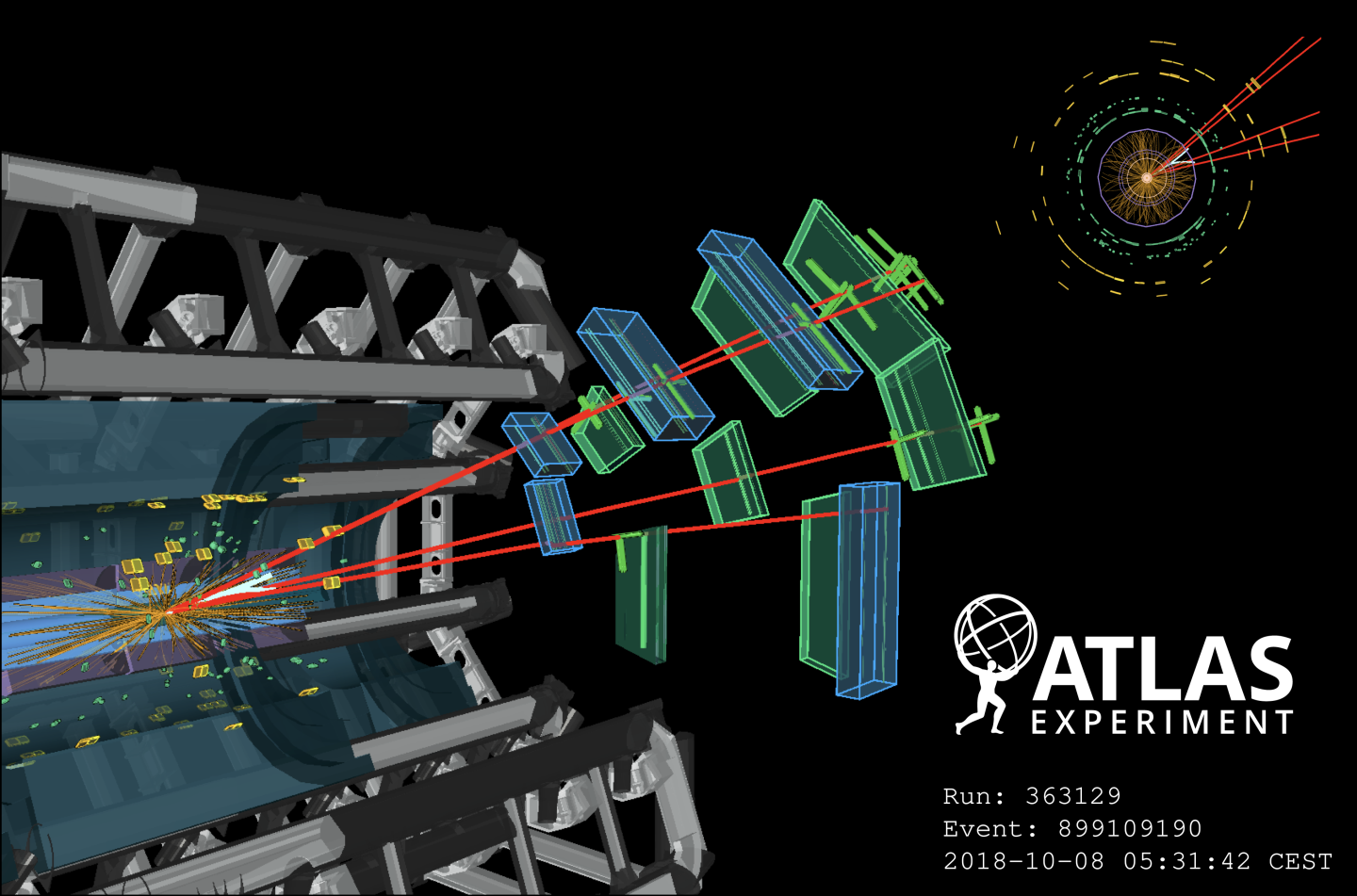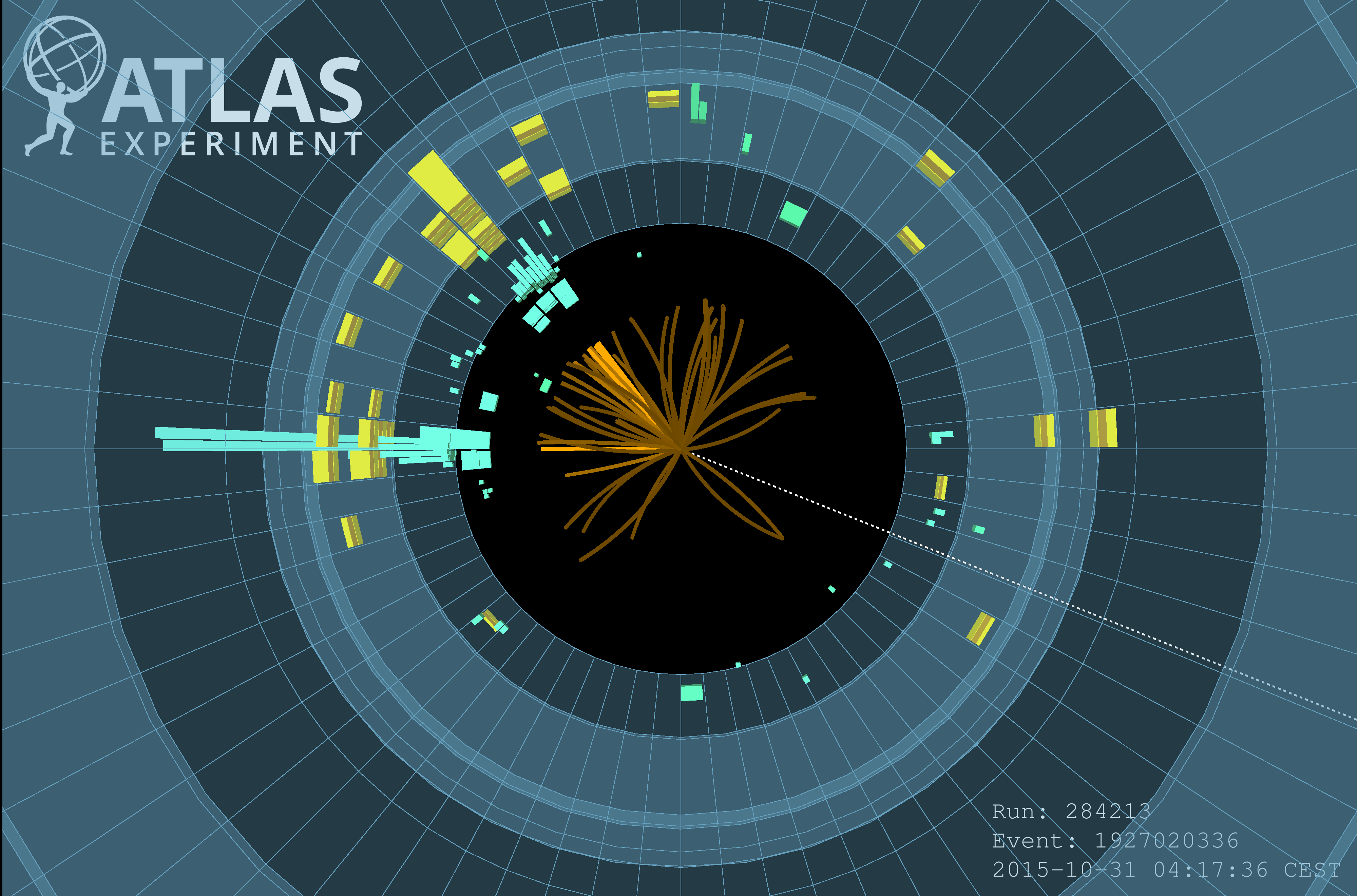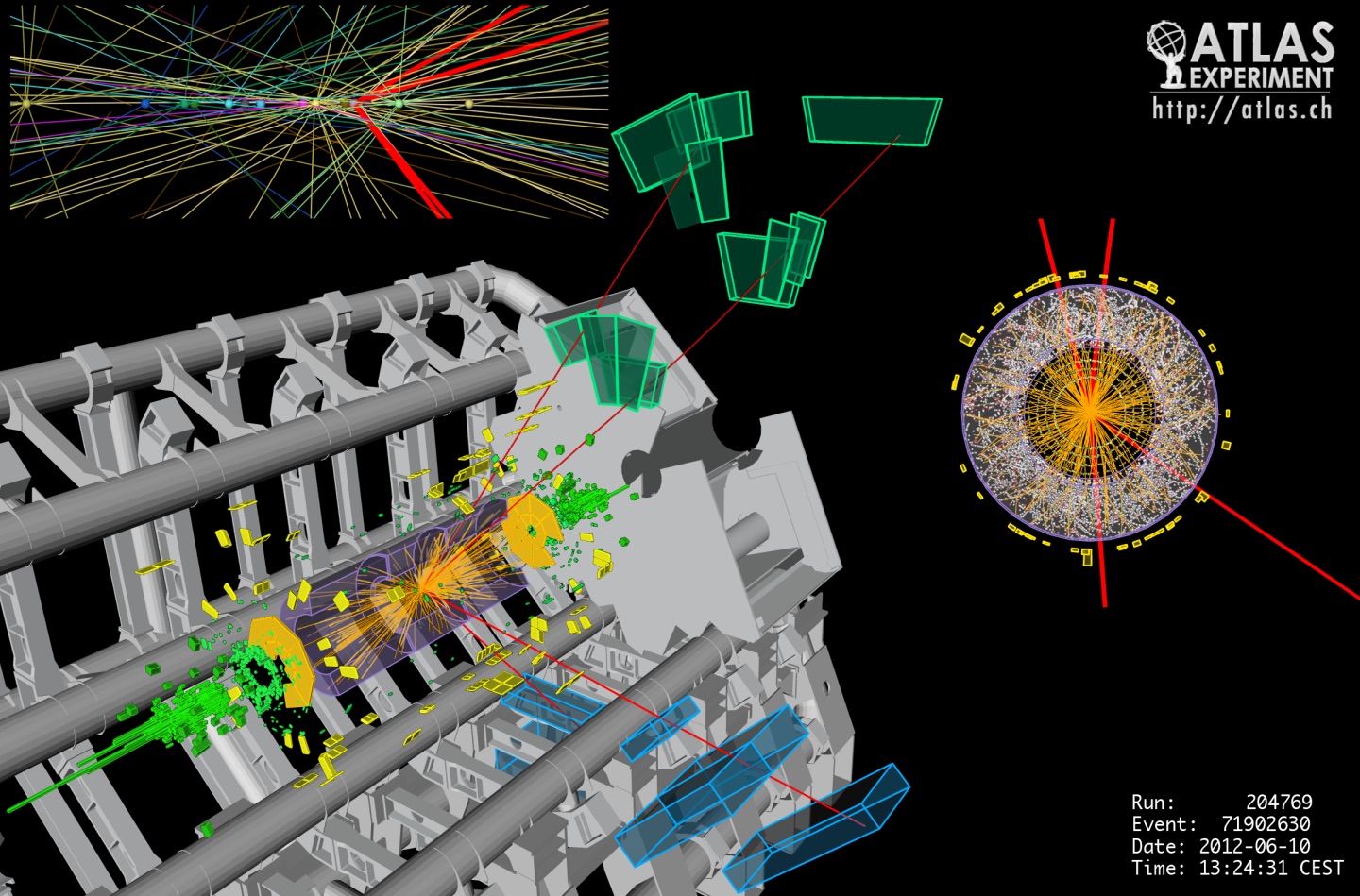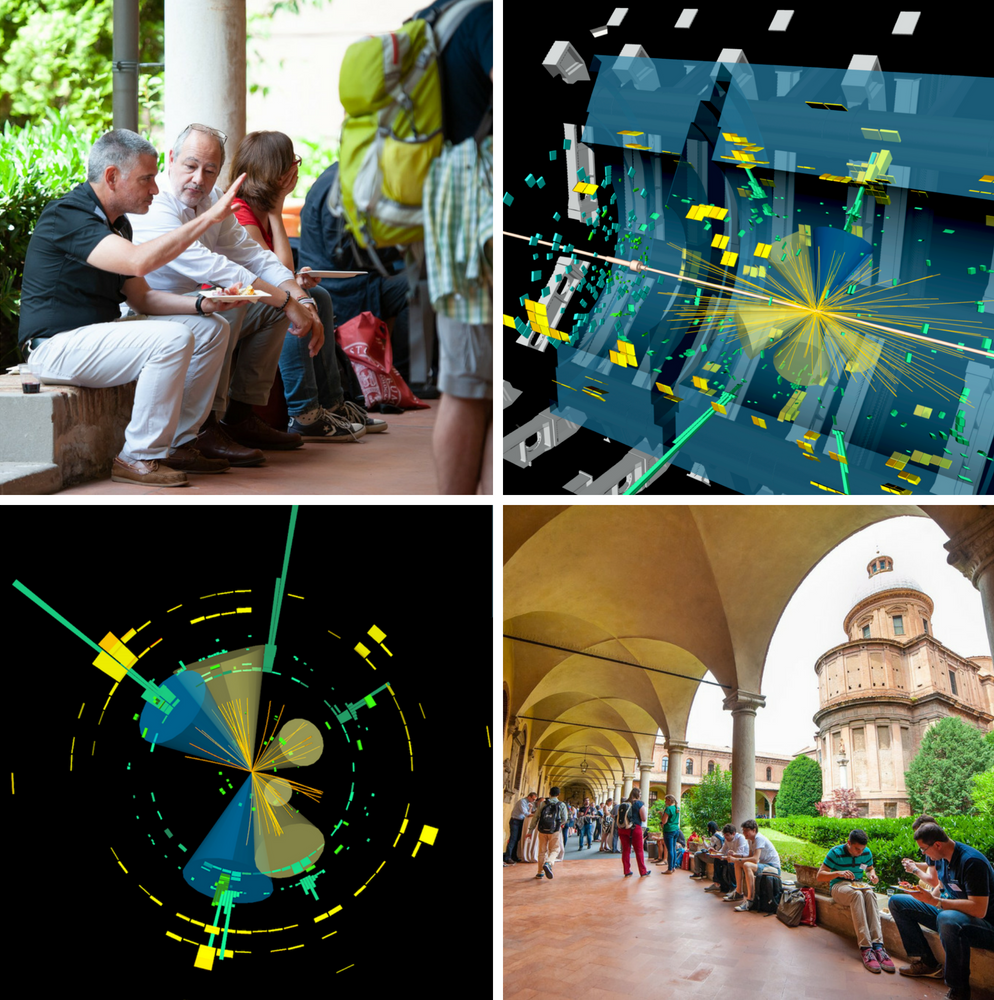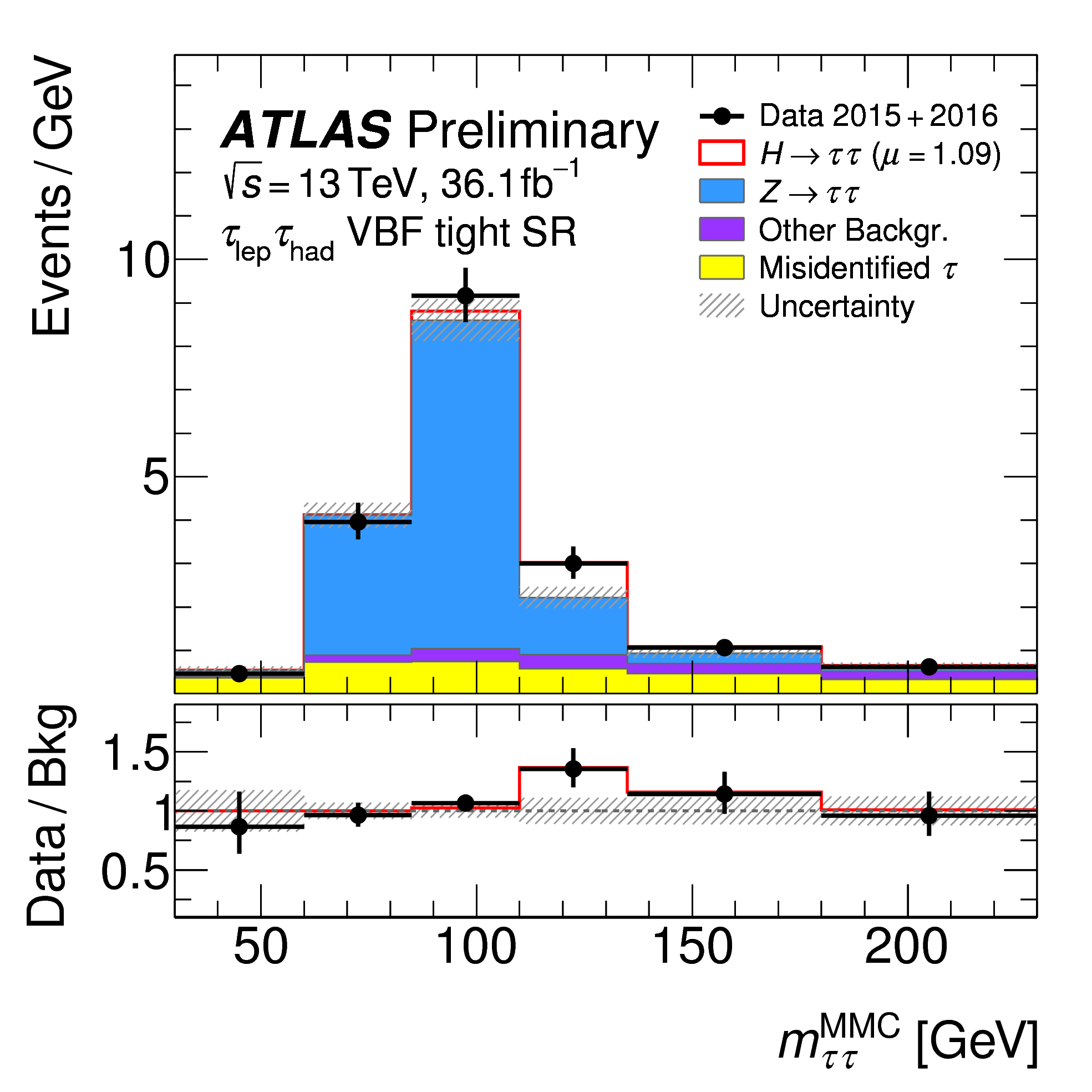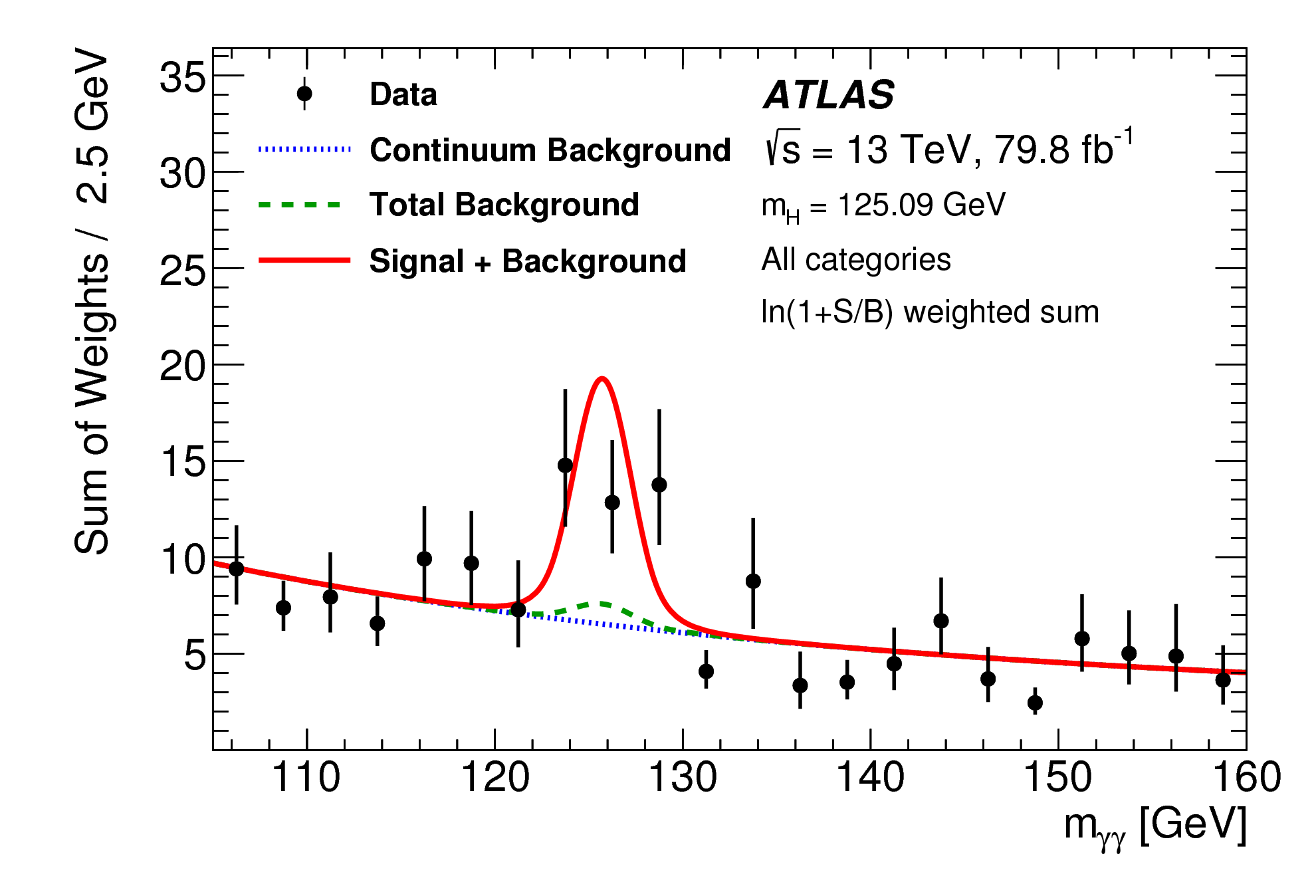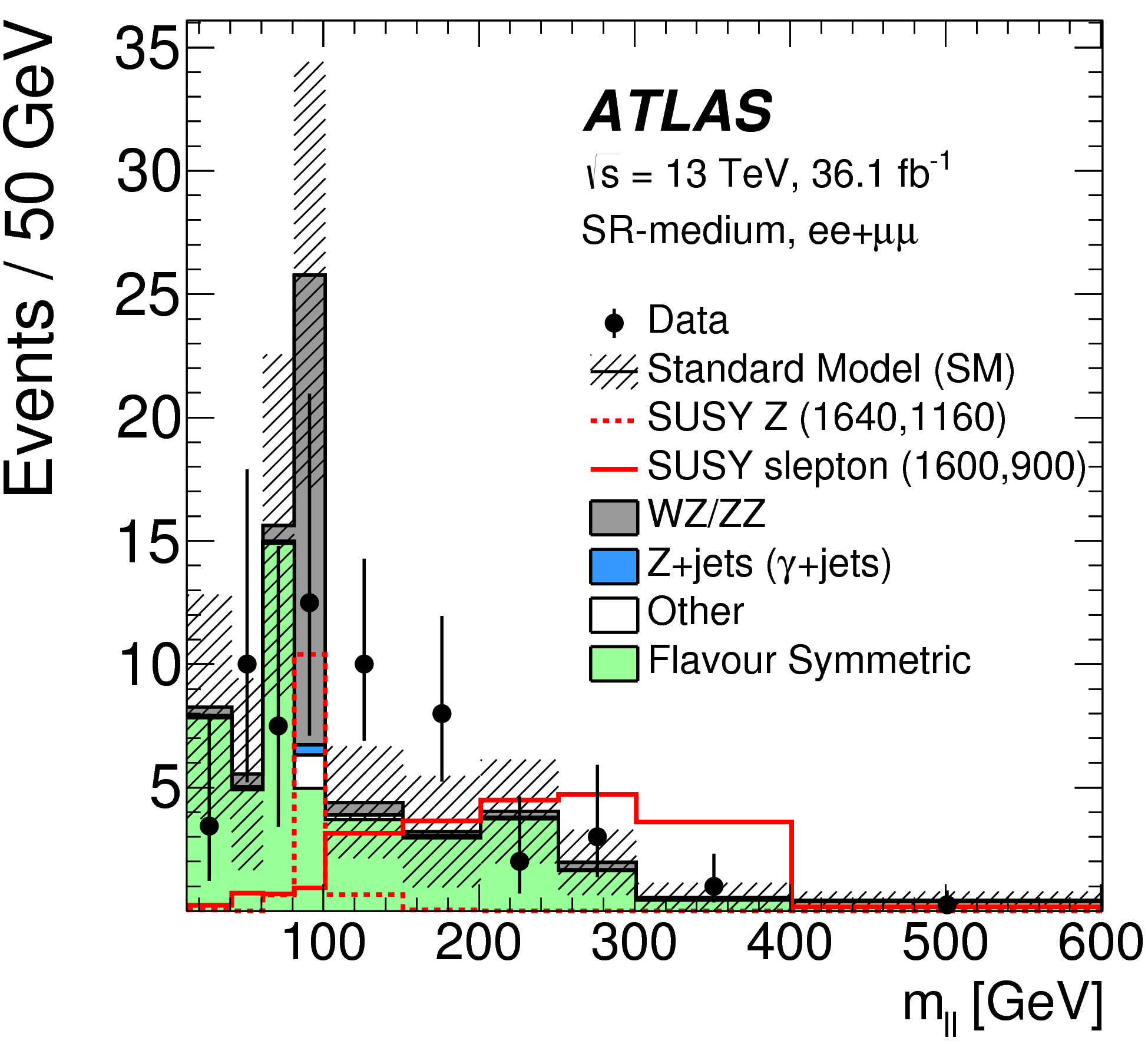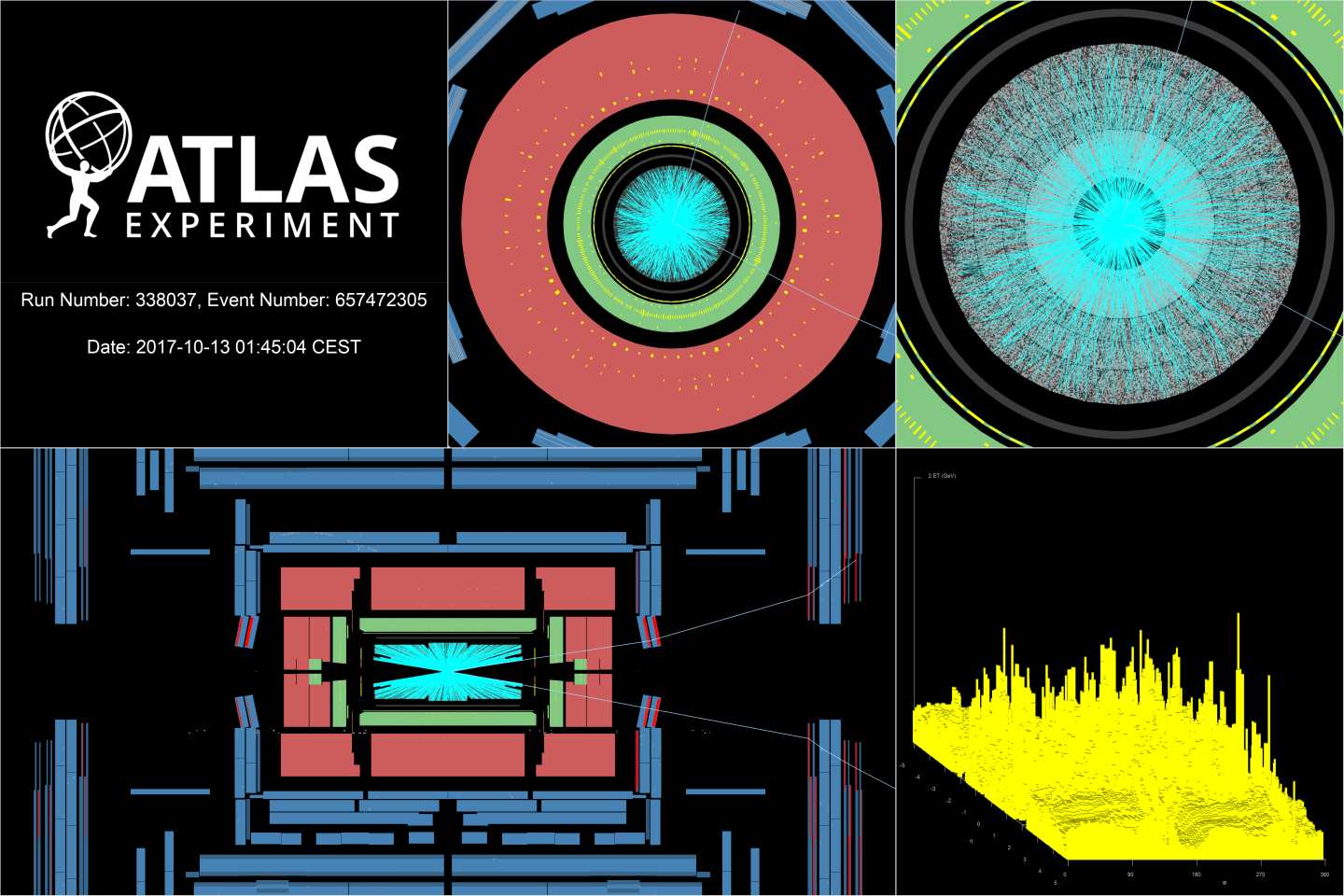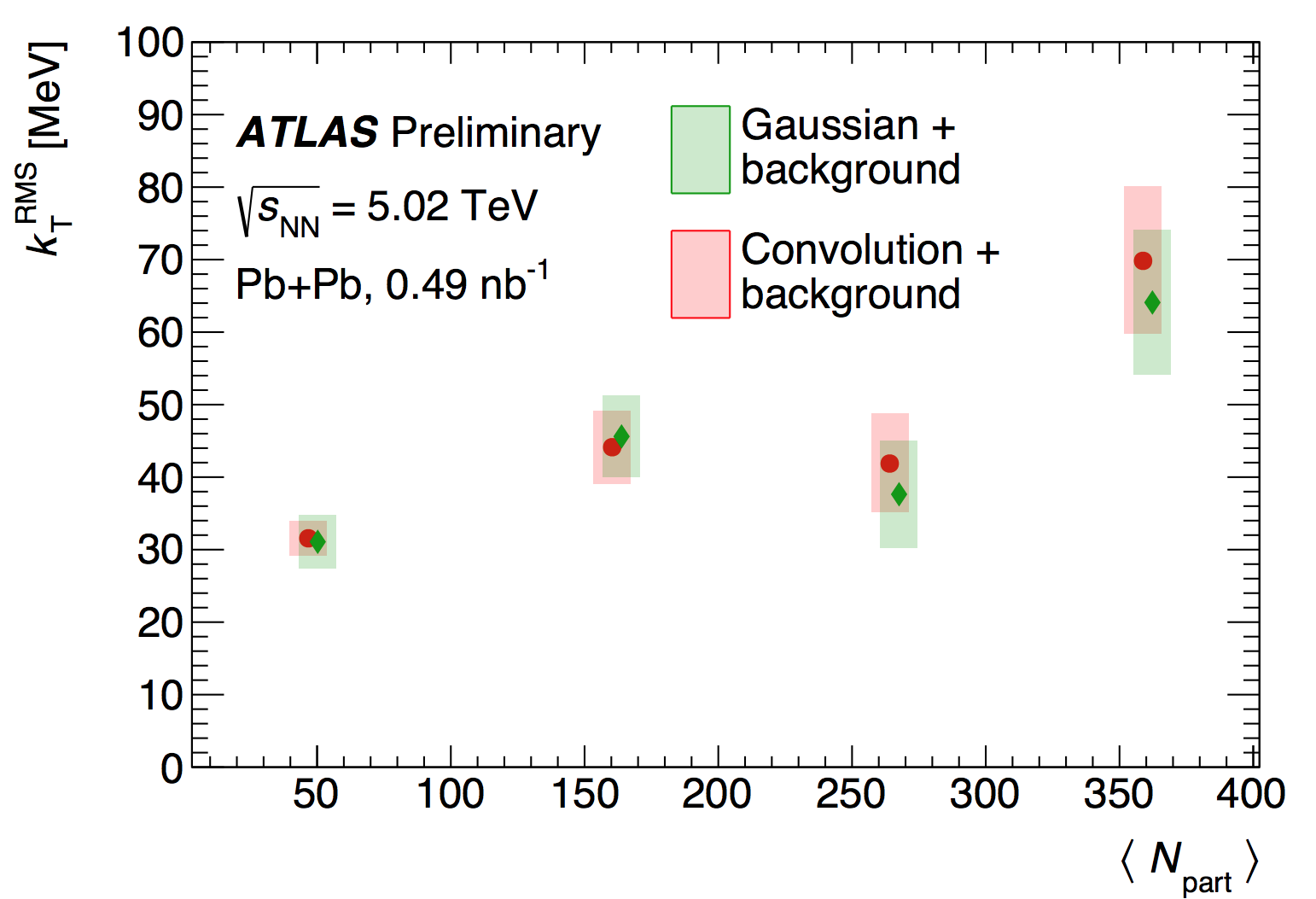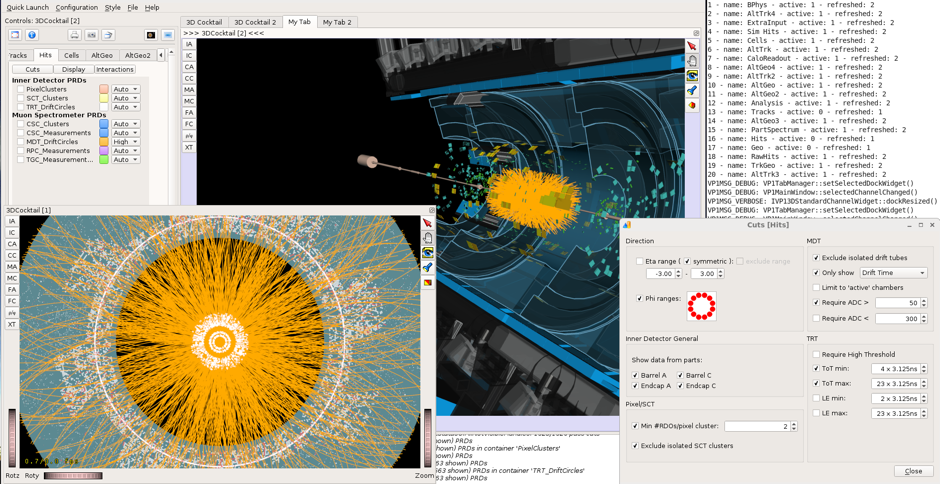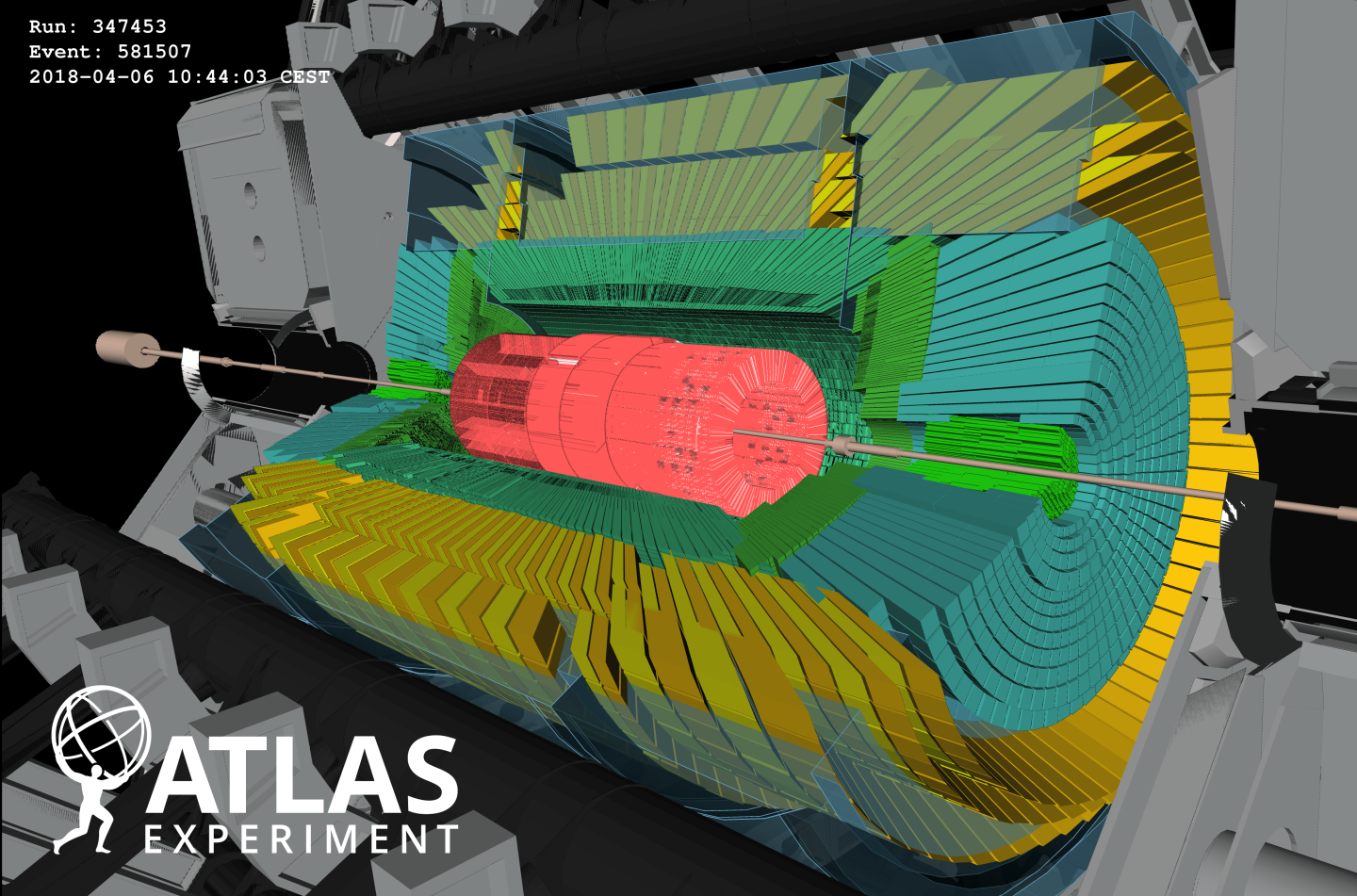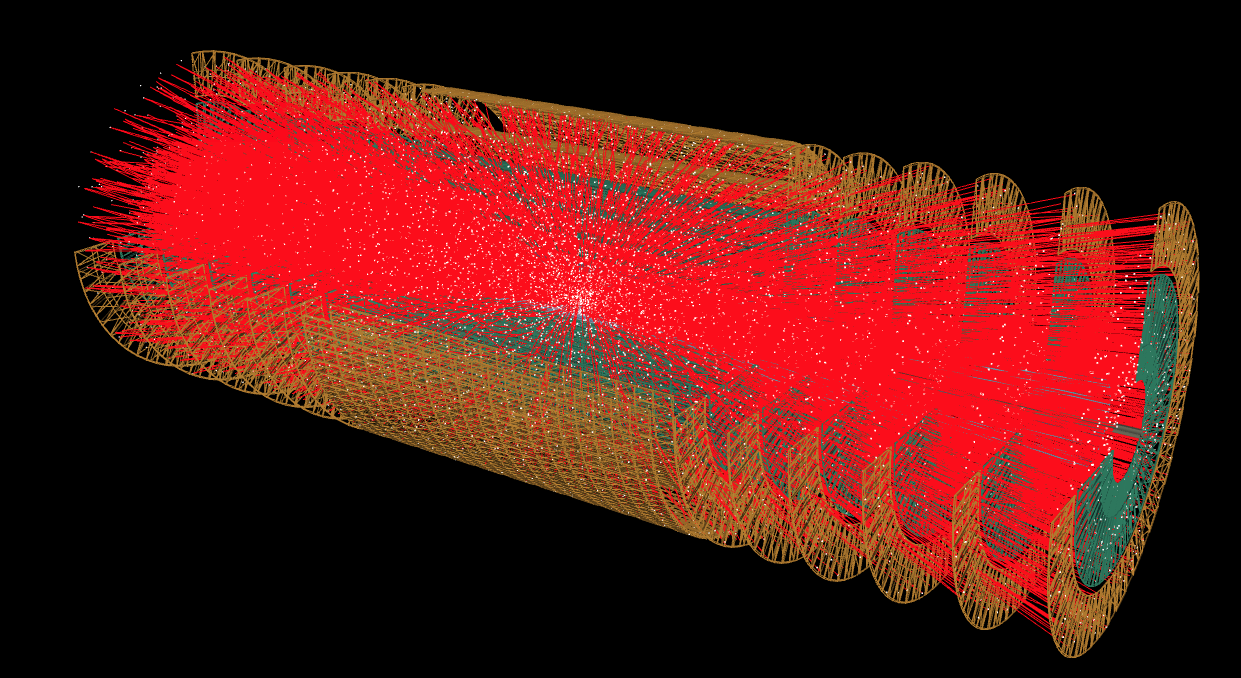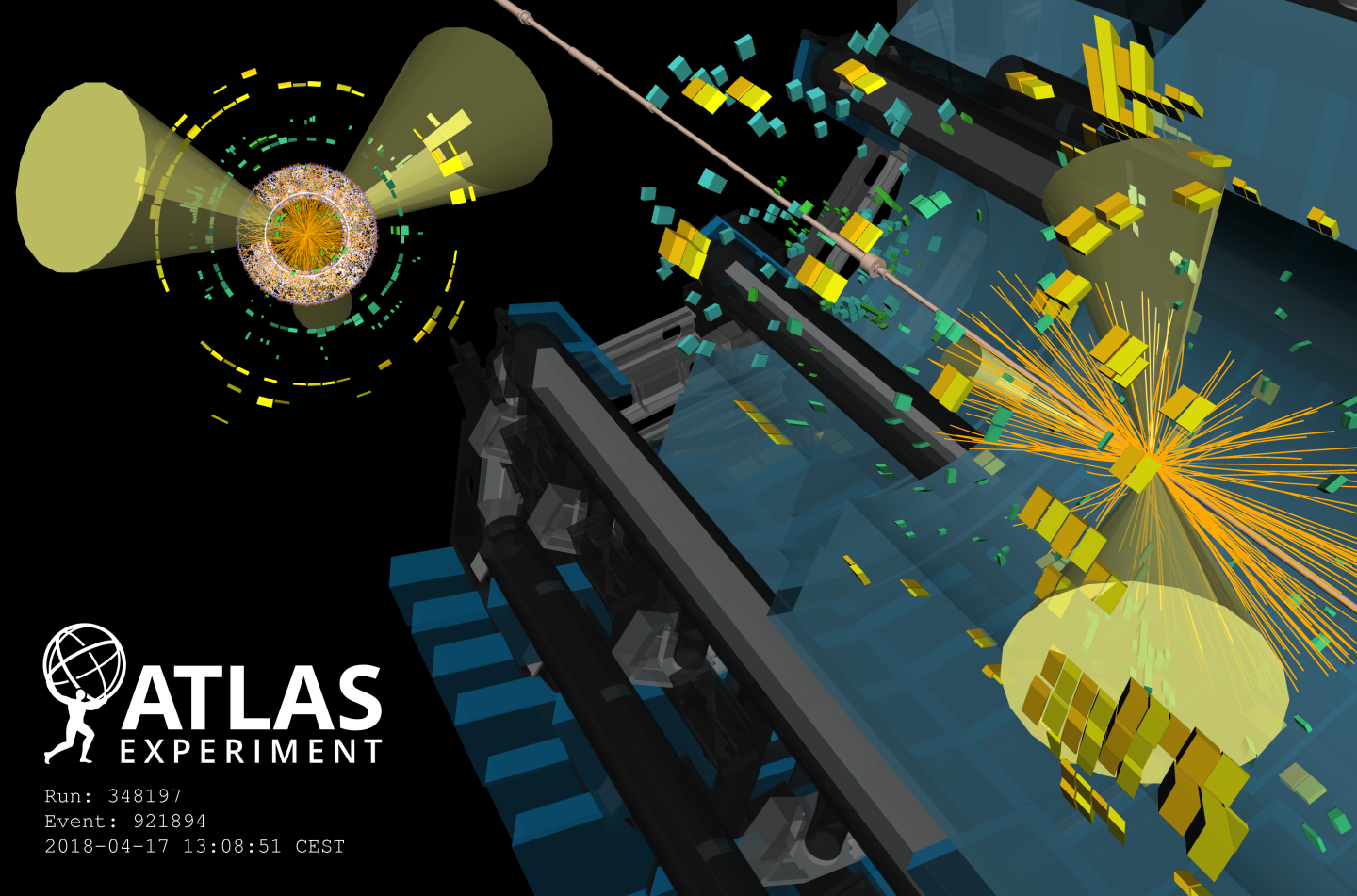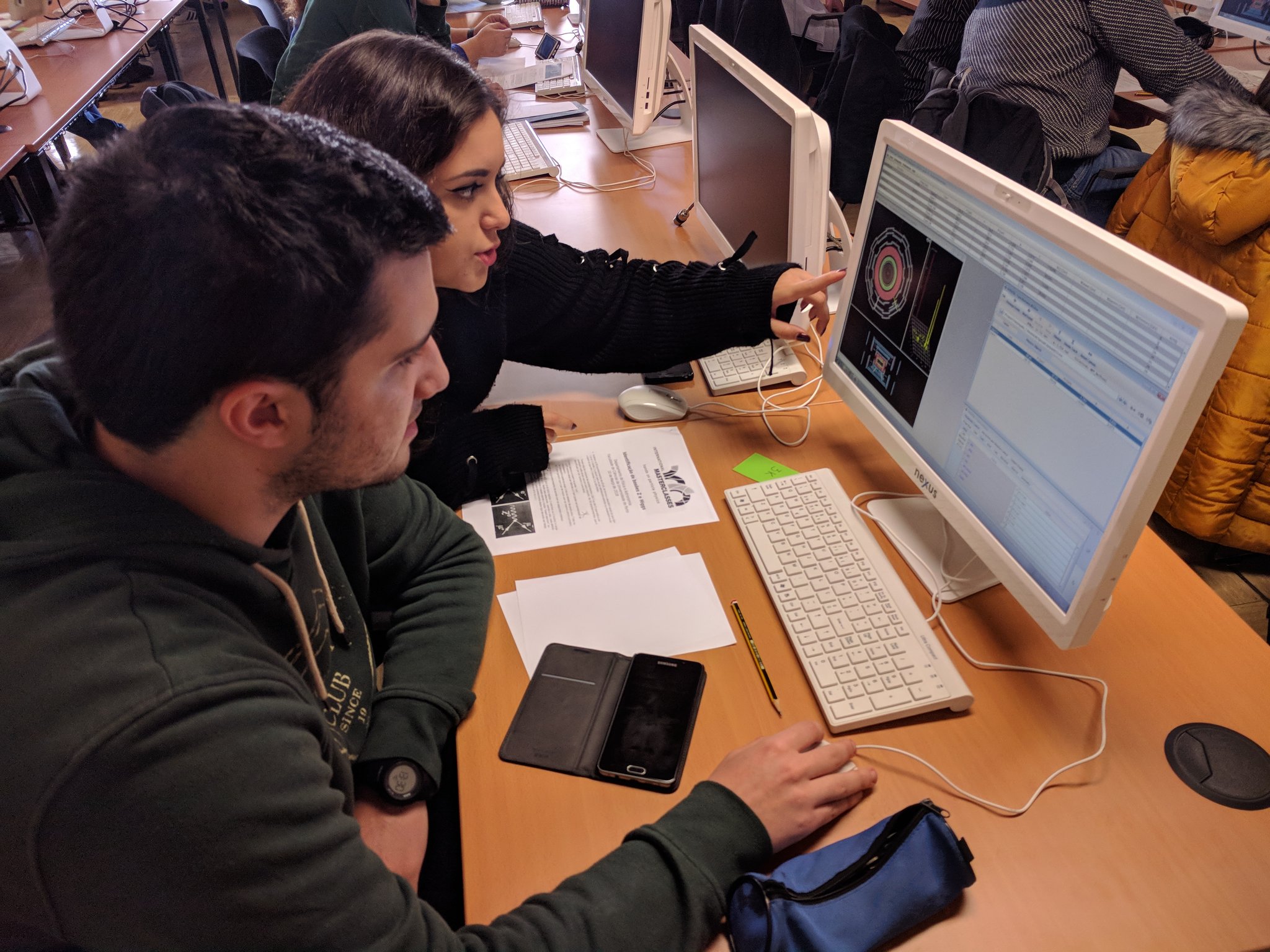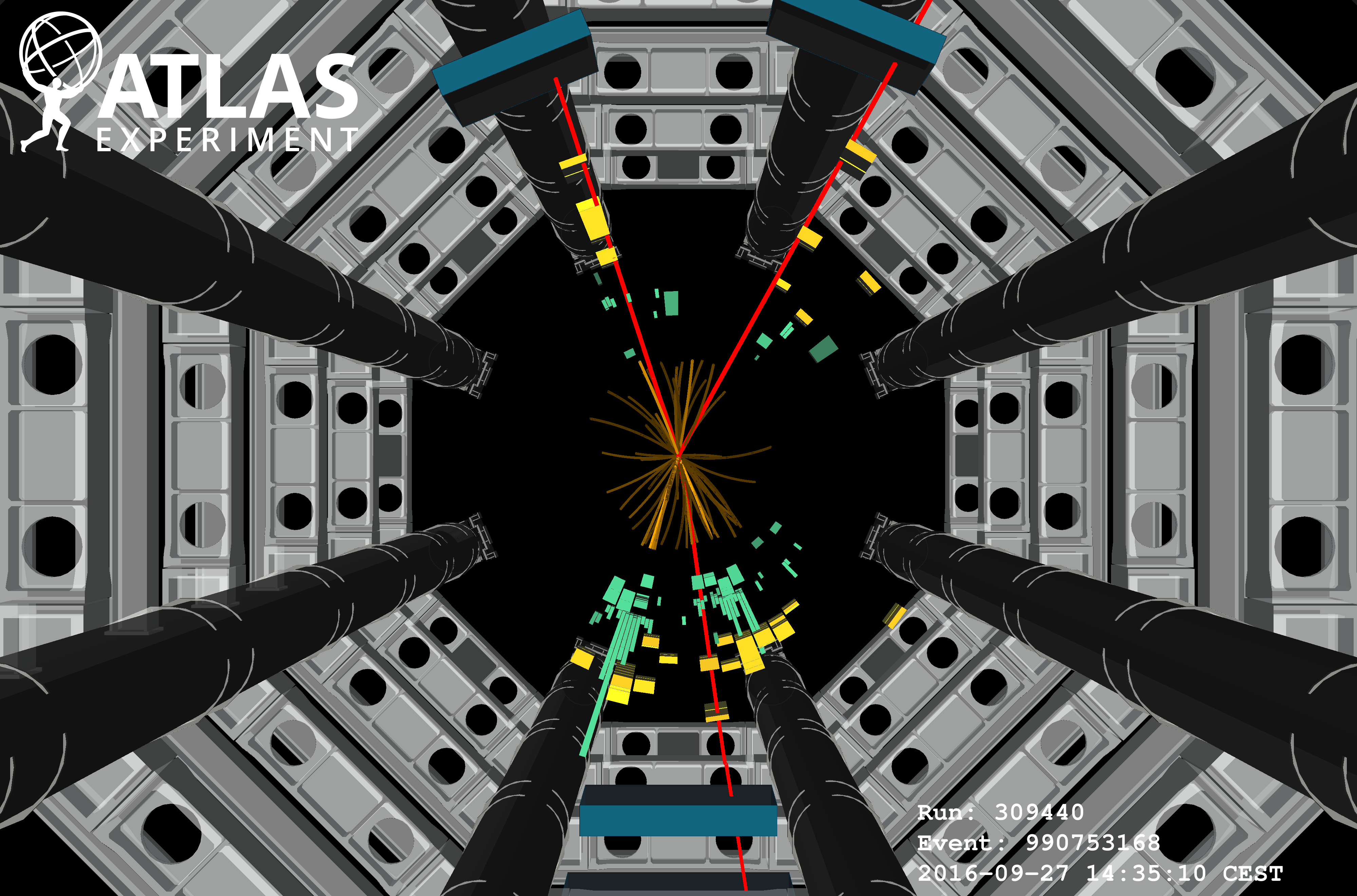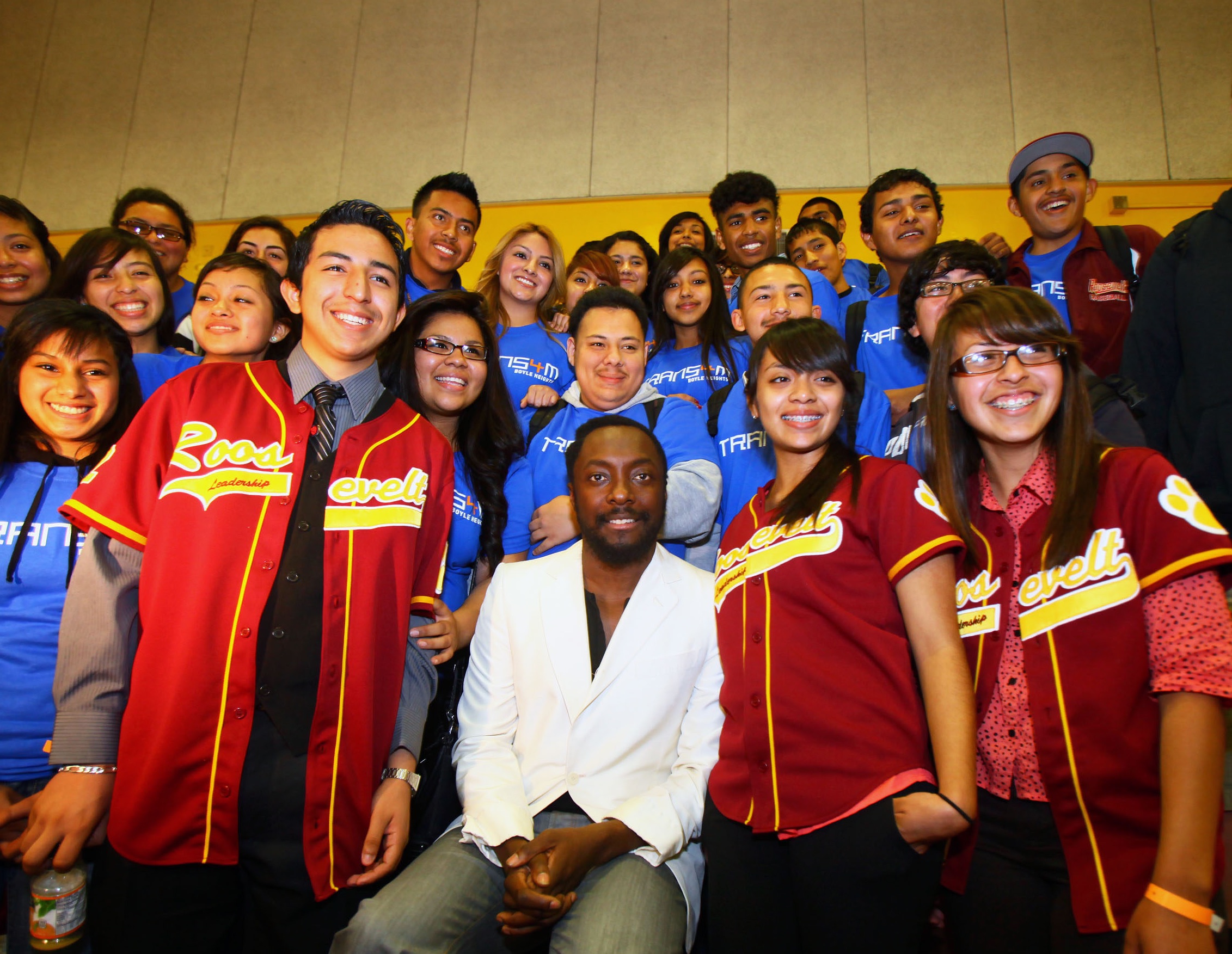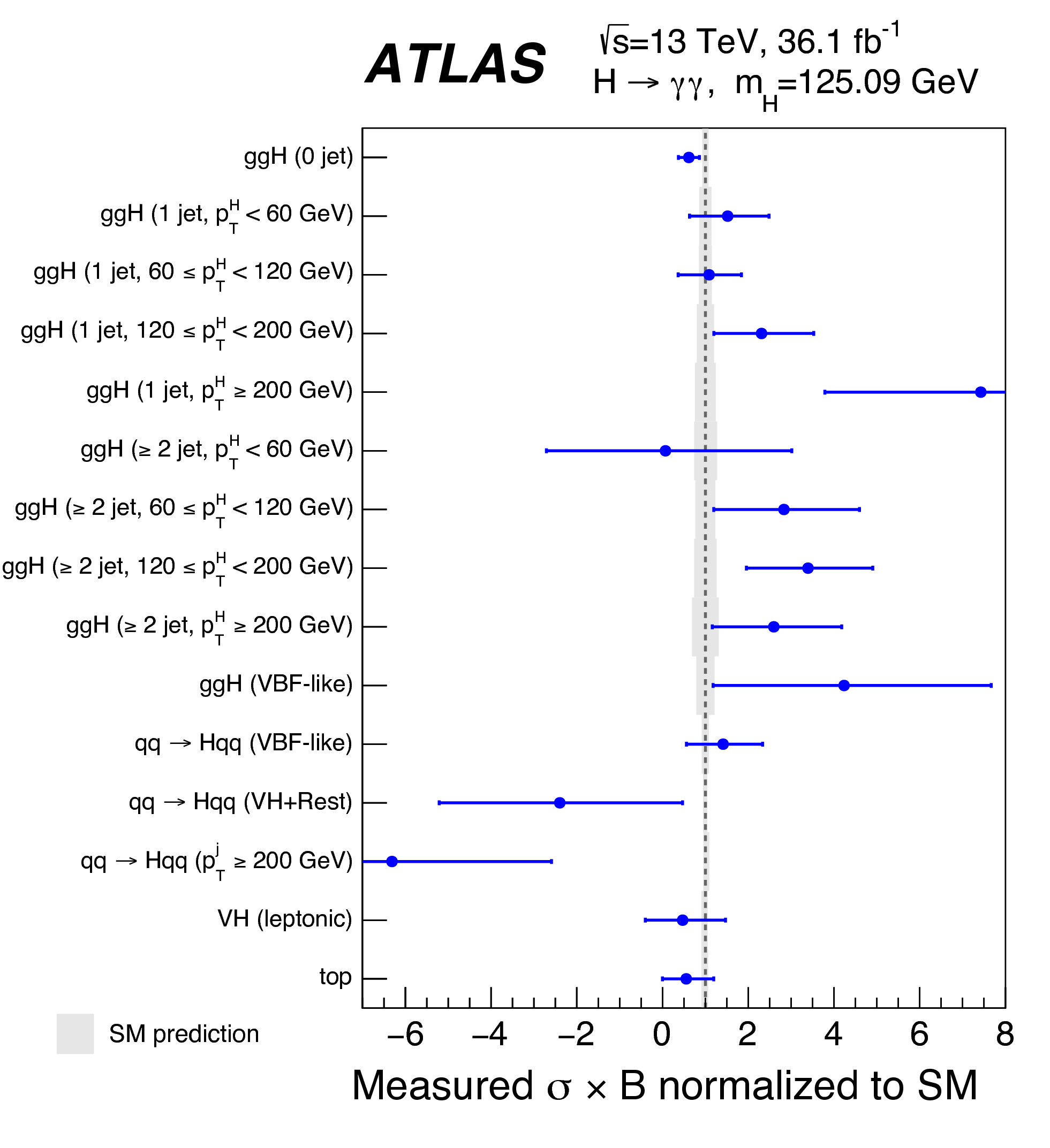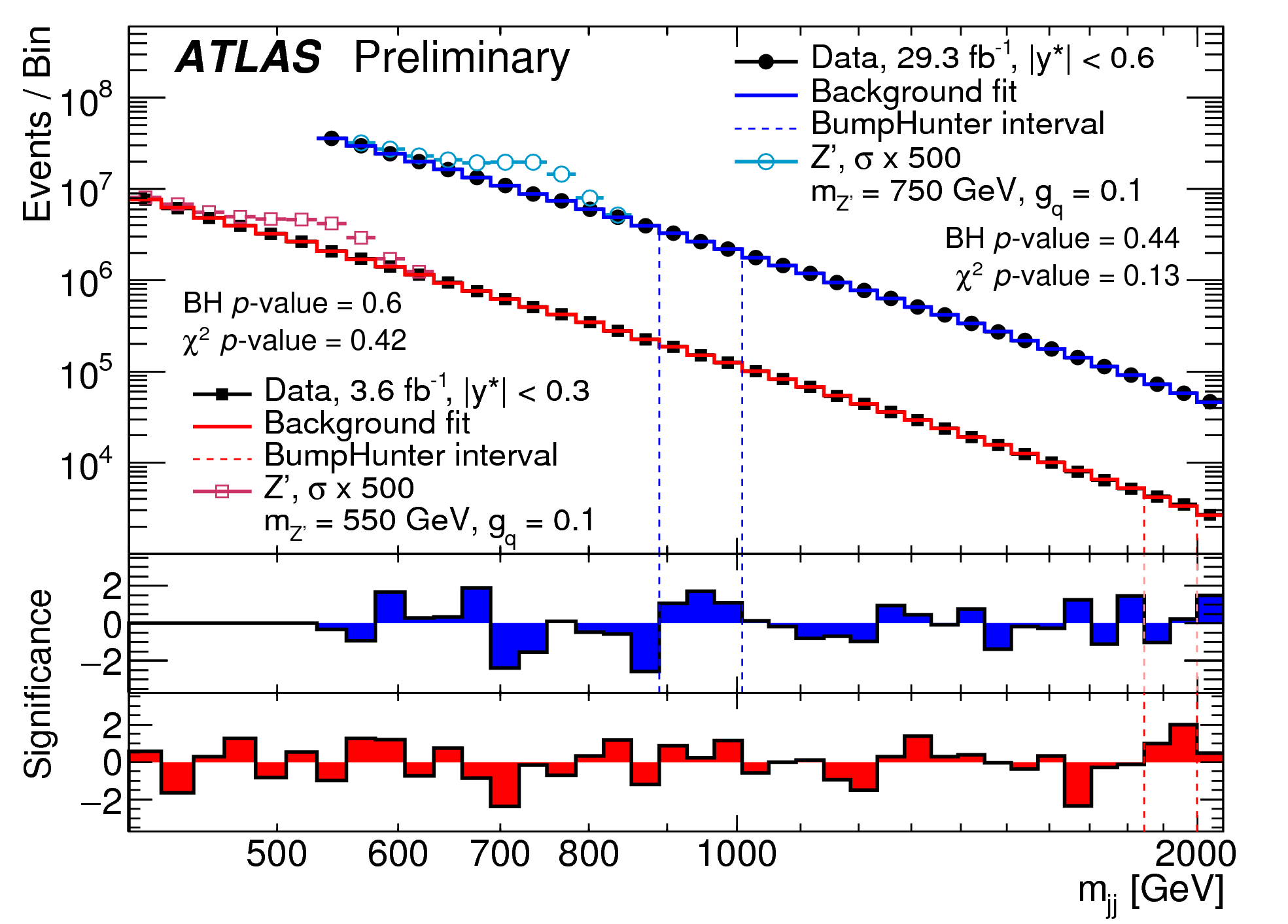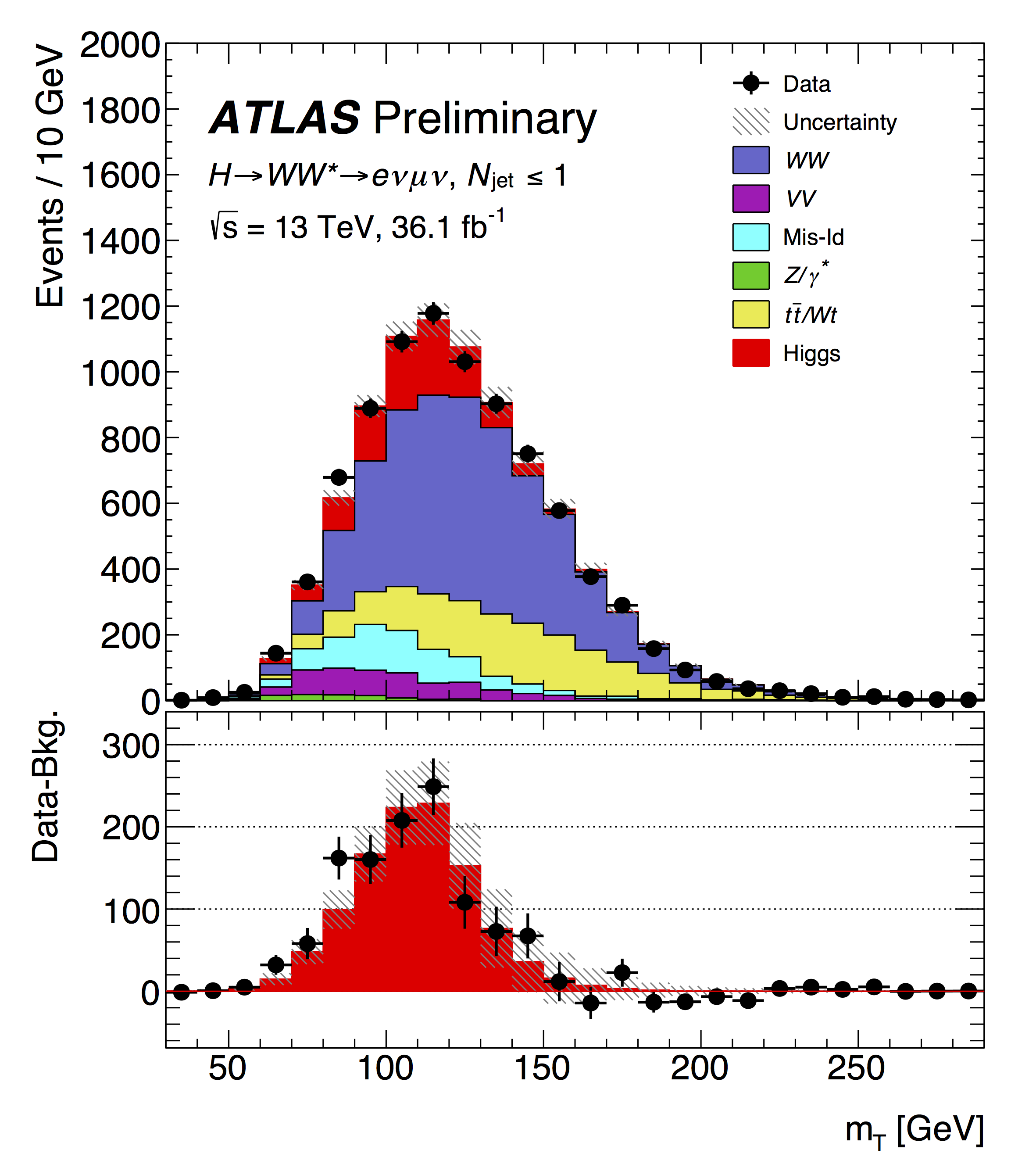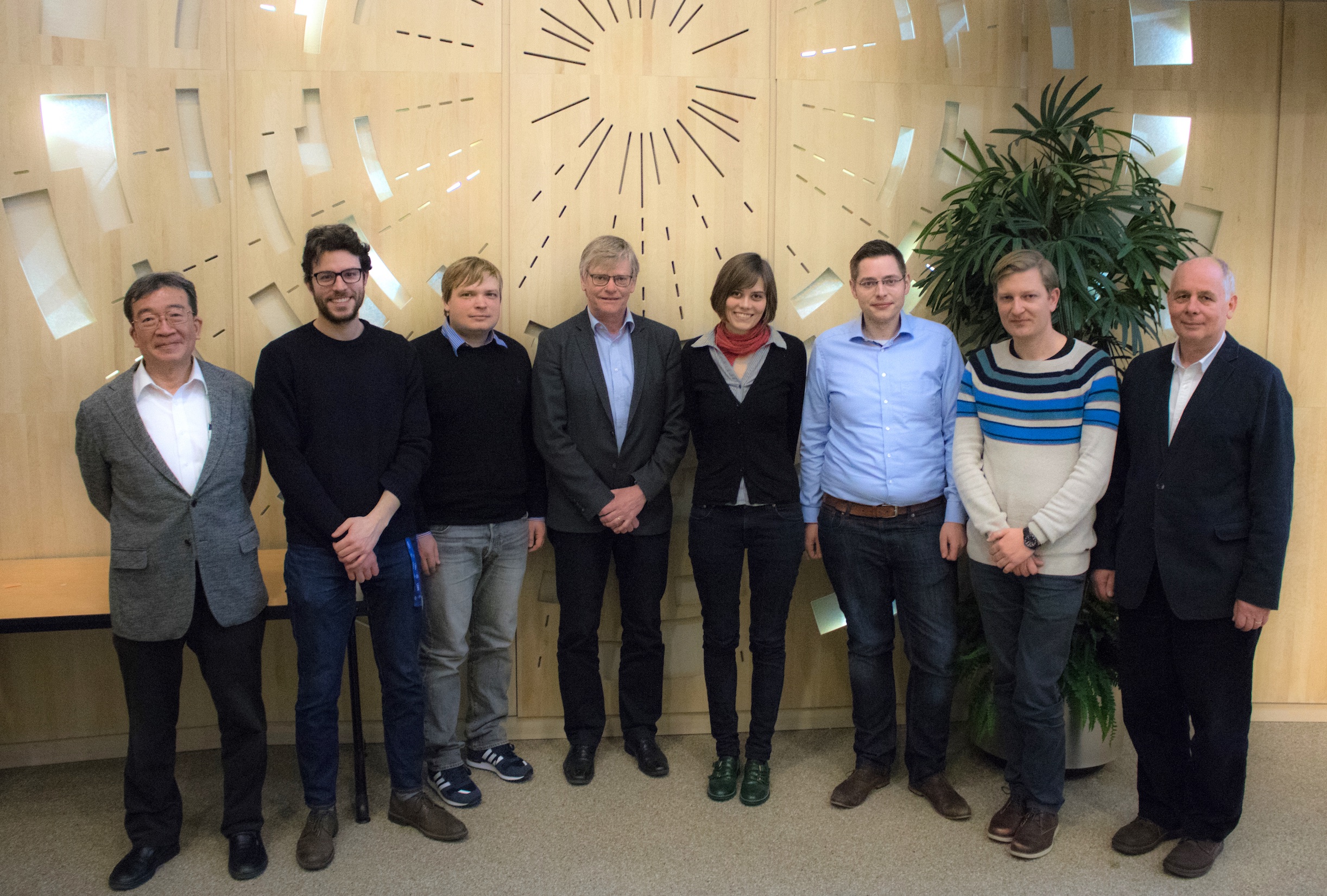Summary of new ATLAS results for ICHEP 2018
The 2018 International Conference on High Energy Physics (ICHEP) kicked off this week in Seoul, South Korea. The ATLAS Collaboration will be unveiling a wide range of new results at ICHEP 2018, including major developments in the measurement of Higgs boson properties, observations of key electroweak production processes, new high precision tests of the Standard Model, and combinations of searches extending the reach to new physics.
News |
The Higgs boson: the hunt, the discovery, the study and some future perspectives
Many questions in particle physics are related to the existence of particle mass. The “Higgs mechanism,” which consists of the Higgs field and its corresponding Higgs boson, is said to give mass to elementary particles.
Feature |
Highlights from LHCP2018
Physicists from around the globe assembled this week at the Centre Domenico in Bologna, Italy, the site of Europe’s oldest university, to attend the sixth annual conference on Large Hadron Collider Physics (LHCP2018). The 425 participants enjoyed picturesque architecture, world-renowned cuisine, and a full menu of recent physics results from the LHC. A sample platter of a few of the tasty morsels is presented.
News |
In conversation with Nick Ellis, one of the architects of the ATLAS trigger
A long-standing member of the ATLAS Collaboration, CERN physicist Nick Ellis was one of the original architects of the ATLAS Trigger. Working in the 1980s and 1990s, Nick led groups developing innovative ways to move and process huge quantities of data for the next generation of colliders. It was a challenge some thought was impossible to meet. Nick currently leads the CERN ATLAS Trigger and Data Acquisition Group and shared his wealth of experience as a key part of the ATLAS Collaboration.
Portrait |
Beyond any doubt: Higgs boson couples to the heaviest lepton
A decisive property of the Higgs boson is its affinity to mass. The heavier a particle is, the stronger the Higgs boson will couple to it. While physicists have firmly established this property for heavy W and Z bosons (force carriers), more data are needed to measure the Higgs boson coupling to the heavy fermions (matter particles). These interactions, known as Yukawa couplings, are very interesting as they proceed through a quite different mechanism than the coupling to force-carrying bosons in the Standard Model.
Catching hadronic vector boson decays with a finer net
Many theoretical models predict that new physics, which could provide answers to these questions, could manifest itself as yet-undiscovered massive particles. These include massive new particles that would decay to much lighter high-momentum electroweak bosons (W and Z). These in turn decay, and the most common signature would be pairs of highly collimated bundles of particles, known as jets.
New ATLAS result establishes production of Higgs boson in association with top quarks
According to the Standard Model, quarks, charged leptons, and W and Z bosons obtain their mass through interactions with the Higgs field, whose fluctuation gives rise to the Higgs boson. To test this theory, ATLAS takes high-precision measurements of the interactions between the Higgs boson and these particles. While experiments had observed and measured the Higgs boson decaying to pairs of W or Z bosons, photons or tau leptons, the Higgs coupling to quarks had – until now – not been observed.
ATLAS observes direct interaction of Higgs boson with top quark
The ATLAS Collaboration at CERN has announced the observation of Higgs bosons produced together with a top-quark pair. Observing this extremely rare process is a significant milestone for the field of High-Energy Physics. It allows physicists to test critical parameters of the Higgs mechanism in the Standard Model of particle physics.
The edge of SUSY
The ATLAS experiment has just completed a new search for evidence of supersymmetry (SUSY), a theory that predicts the existence of new “super-partner” particles, with different properties from their Standard Model counterparts. This search looks for SUSY particles decaying to produce two leptons and scrutinises the invariant mass distribution of these leptons, hoping to find a bump.
Noble collisions give new insights on heavy ion systems
In October 2017, the ATLAS experiment recorded collisions of xenon nuclei for the first time. While massive compared to a proton, xenon nuclei are smaller than the lead ions typically collided in the LHC. The xenon-xenon collision data, combined with previous results from the analysis of lead-lead collisions, provide the first opportunity to examine heavy ion collisions in a system that is distinctly smaller in size. This allows physicists to study in detail the role of the collision geometry for observables often associated with the quark-gluon plasma.
ATLAS studies the quark-gluon plasma using muon pairs produced by two photons
Heavy ion collisions at the Large Hadron Collider (LHC) form a hot, dense medium called the quark-gluon plasma (QGP), in which the primary constituents are thought to be quarks and gluons produced in the initial interactions of the nuclei. Besides typical heavy ion collisions, where the nucleons in the colliding nuclei undergo multiple strong interactions with each other, there is also a class of “ultraperipheral” collisions. In these collisions, the nuclei are far enough apart to miss each other, but the surrounding electromagnetic field of one nucleus is able to interact both with the other nucleus (“photonuclear” interactions) and with the other electromagnetic field (“photon-photon” interactions).
Waiting for physics: Stable beams!
Following the first “beam splash” tests in early-April, the ATLAS experiment awaited the next milestone on the road to data-taking: "stable beams". This is when the LHC proton beams are aligned, squeezed, focused and finally steered to collide head-to-head. It is an important test, as it allows us to verify that the collision mechanism is ready to take data that are good for physics studies.
Blog |
Waiting for physics: Splashing beams
Each year, around mid-spring, the giant LHC accelerator wakes up from its winter maintenance and gets ready for a new feverish period of data taking. But before smashing protons once again, some tests have to be done, to check that everything is in order and that the machine can accelerate and collide particles properly, as it did before the shutdown.
Blog |
Searching for forces beyond the Standard Model
The ATLAS collaboration is continuing to scour the wealth of data provided by the LHC for any signs of physics beyond the particles and interactions described by the Standard Model. One approach is to search for new forces in addition to the Standard Model’s electroweak and strong interactions. Such forces could be propagated by new massive bosons playing the role the W and Z bosons have in mediating the electroweak force.
Charming SUSY: running out of places to hide
Why is gravity so much weaker than the other forces of nature? This fundamental discrepancy, known as the “hierarchy problem”, has long been a source of puzzlement. Since the discovery of a scalar particle, the Higgs boson, with a mass of 125 GeV near that of the W and Z bosons mediating the weak force, the hierarchy problem is more acute than ever.
Are you up for the TrackML challenge?
Physicists from the ATLAS, CMS and LHCb collaborations have just launched the TrackML challenge – your chance to develop new machine learning solutions for the next generation of particles detectors.
News |
ATLAS starts new year of data-taking
News |
Hands-on particles: Schools worldwide analyse ATLAS data
Every spring, hundreds of universities around the world open their doors to high-school students for a day to give them hands-on experience in particle physics. The International Masterclass programme gives students the chance to use real data collected by the ATLAS detector and other LHC experiments to test the Standard Model and search for new particles.
News |
Beyond discovery: ATLAS explores the Higgs boson
The ATLAS Collaboration at CERN has released new studies of the Higgs boson using 13 TeV data collected in 2015 and 2016. The results further corroborate the Standard Model nature of the Higgs boson, and open doors to fresh searches for new physics.
News |
ATLAS on track for 2018 data taking
It’s kick off at the Large Hadron Collider! Proton beams are circulating once again in the accelerator, marking the start of a new year of exploration for the ATLAS experiment.
News |
Angels and Teachers
I met beautiful people in Los Angeles earlier this month: smart, talented students, all destined for great careers. They welcomed me to their high schools and their after-school programmes, all well-equipped with computing, electronics, a robotics lab and, above all, a brilliant staff of teachers.
Blog |
ATLAS illuminates the Higgs boson at 13 TeV
The ATLAS collaboration has released a set of comprehensive results that illuminate the properties of the Higgs boson with improved precision, using its decay into two photons with LHC collisions recorded at a centre-of-mass energy of 13 TeV.
New data-collection method aids in the hunt for new physics
What do you do when you produce more data than you can handle? This might seem like a strange question for experimental physicists, but it’s a problem that the ATLAS detector faces every day. While the LHC continues to produce ever-higher rates of proton collisions, the detector can only record data at a fixed rate. Therefore, tough choices must be made about what events to keep. This is not a decision made lightly – what if the thrown-away data contain some long-sought new particles beyond those of the Standard Model.
The exploration of the Higgs boson continues
Discovering the Higgs boson can be likened to finding a new continent. While a momentous event in itself, the most exciting part remains the exploration of the new land! In a new result presented today at the Rencontres de Moriond, the ATLAS collaboration examined the Higgs boson decaying into two W bosons
New winners of the ATLAS Thesis Awards
News |


